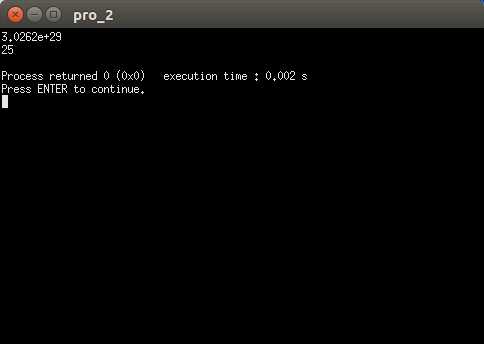标签:out png c++ 类 ons 构造函数 运算 数据存储 灵活 include
1.将其他类型转换为当前类类型需要借助转换构造函数。
具体看例子:点击
1.将当前类类型转换为其他类型,只能出现在类中。
2.语法格式:
operator type(){ //TODO: return data; }
operator 是 C++ 关键字,type 是要转换的目标类型,data 是要返回的 type 类型的数据。
类型转换的本质
static_cast dynamic_cast const _cast和reinterpret_cast
| 关键字 | 说明 |
|---|---|
| static_cast | 用于良性转换,一般不会导致意外发生,风险很低。 |
| const_cast | 用于 const 与非 const、volatile 与非 volatile 之间的转换。 |
| reinterpret_cast | 高度危险的转换,这种转换仅仅是对二进制位的重新解释,不会借助已有的转换规则对数据进行调整,但是可以实现最灵活的 C++ 类型转换。 |
| dynamic_cast | 借助 RTTI,用于类型安全的向下转型(Downcasting)。 |
1.static_cast 只能用于良性转换,这样的转换风险较低,一般不会发生什么意外,例如:
void *转int *、char *转void *等;
需要注意的是,static_cast 不能用于无关类型之间的转换,因为这些转换都是有风险的,例如:
int *转double *、Student *转int *等。不同类型的数据存储格式不一样,长度也不一样,用
A 类型的指针指向 B 类型的数据后,会按照 A 类型的方式来处理数据:如果是读取操作,可能会得到一堆没有意义的值;如果是写入操作,可能会使 B
类型的数据遭到破坏,当再次以 B 类型的方式读取数据时会得到一堆没有意义的值。

1 #include <iostream> 2 #include <cstdlib> 3 using namespace std; 4 5 class Complex{ 6 public: 7 Complex(double real = 0.0, double imag = 0.0): m_real(real), m_imag(imag){ } 8 public: 9 operator double() const { return m_real; } //类型转换函数 10 private: 11 double m_real; 12 double m_imag; 13 }; 14 15 int main(){ 16 //下面是正确的用法 17 int m = 100; 18 Complex c(12.5, 23.8); 19 long n = static_cast<long>(m); //宽转换,没有信息丢失 20 char ch = static_cast<char>(m); //窄转换,可能会丢失信息 21 int *p1 = static_cast<int*>( malloc(10 * sizeof(int)) ); //将void指针转换为具体类型指针 22 void *p2 = static_cast<void*>(p1); //将具体类型指针,转换为void指针 23 double real= static_cast<double>(c); //调用类型转换函数 24 25 //下面的用法是错误的 26 float *p3 = static_cast<float*>(p1); //不能在两个具体类型的指针之间进行转换 27 p3 = static_cast<float*>(0X2DF9); //不能将整数转换为指针类型 28 29 return 0; 30 }
将const类型转换为非const类型
1 #include <iostream> 2 using namespace std; 3 4 int main(){ 5 const int n = 100; 6 int *p = const_cast<int*>(&n); 7 *p = 234; 8 cout<<"n = "<<n<<endl; 9 cout<<"*p = "<<*p<<endl; 10 11 return 0; 12 }
运行结果:
n = 100;
*p = 234;
&n用来获取 n 的地址,它的类型为const int *,必须使用 const_cast 转换为int *类型后才能赋值给 p。由于 p 指向了 n,并且 n 占用的是栈内存,有写入权限,所以可以通过 p 修改 n 的值。
有读者可能会问,为什么通过 n 和 *p 输出的值不一样呢?这是因为 C++ 对常量的处理更像是编译时期的#define,是一个值替换的过程,代码中所有使用 n 的地方在编译期间就被替换成了 100。换句话说,第 8 行代码被修改成了下面的形式:
cout<<"n = "<<100<<endl;

1 #include <iostream> 2 using namespace std; 3 4 class A{ 5 public: 6 A(int a = 0, int b = 0): m_a(a), m_b(b){} 7 private: 8 int m_a; 9 int m_b; 10 }; 11 12 int main(){ 13 //将 char* 转换为 float* 14 char str[]="http://c.biancheng.net"; 15 float *p1 = reinterpret_cast<float*>(str); 16 cout<<*p1<<endl; 17 //将 int 转换为 int* 18 int *p = reinterpret_cast<int*>(100); 19 //将 A* 转换为 int* 20 p = reinterpret_cast<int*>(new A(25, 96)); 21 cout<<*p<<endl; 22 23 return 0; 24 }

dynamic_用于类的继承层次进行类型转换,允许向上转型,也允许向下转型。向上转型无检测,向下转型需经rtti进行检测,只有部分成功。
语法格式:
dynamic_cast<newType>(rxpression)
newType 和 expression 必须同时是指针类型或者引用类型。换句话说,dynamic_cast 只能转换指针类型和引用类型,其它类型(int、
double、数组、类、结构体等)都不行。
标签:out png c++ 类 ons 构造函数 运算 数据存储 灵活 include
原文地址:https://www.cnblogs.com/Mayfly-nymph/p/8974623.html